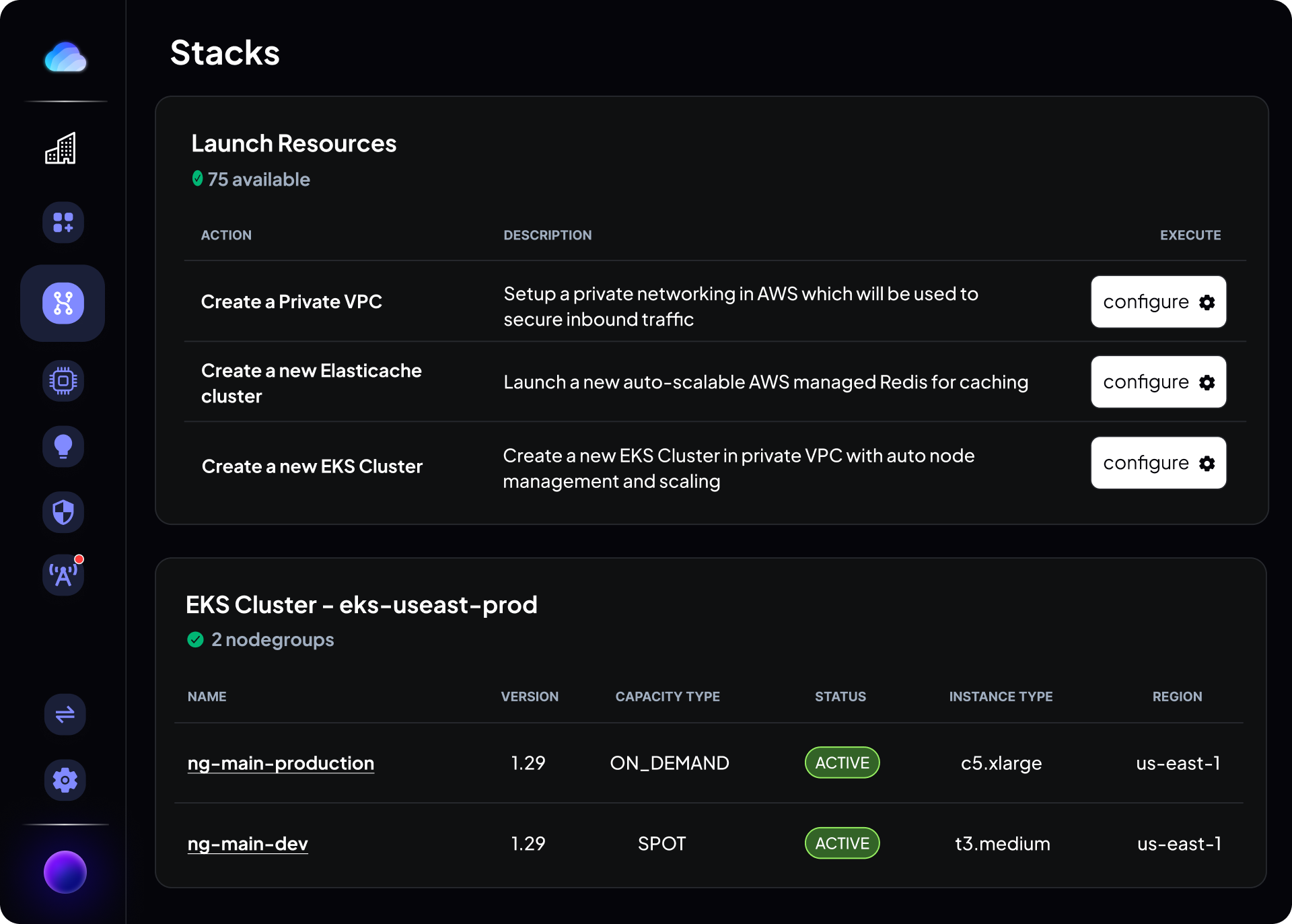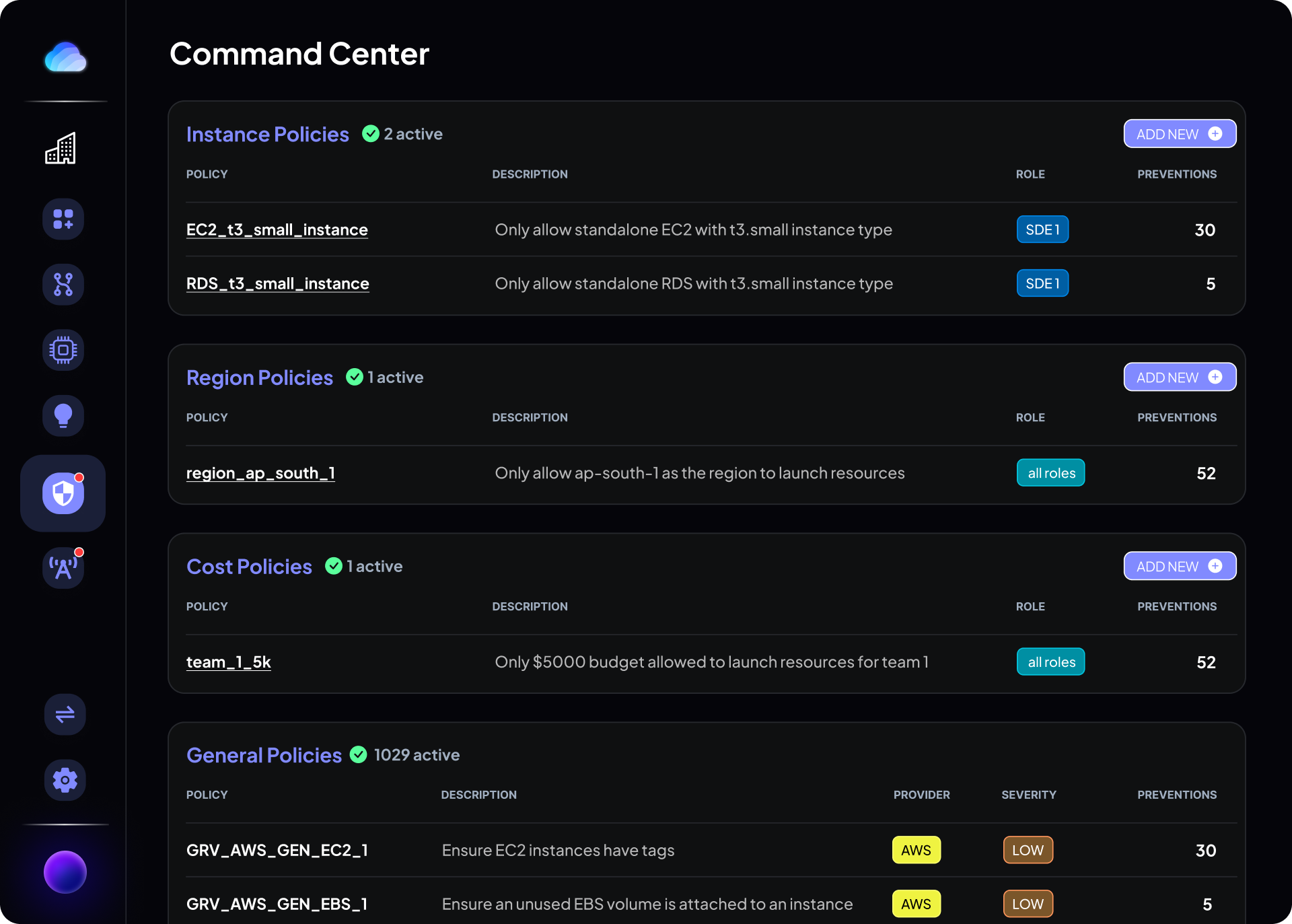DevOps
Productivity
Shift-Left: Bring Dev and DevOps Together


As many of us have heard, Shift-left can solve a lot of challenges but how do we ensure that it is working?
What is Shift-left?
In simpler terms, Shift-left is moving all the testing, validation, and QA before our software is deployed on the cloud. For any Shift-left to work, we at the base level need two things:
Cloud Automation
Automations, especially for DevOps make life very easy. It enables Devs to take self-serve independent actions on the cloud with pipelines that can run anytime and does not need much DevOps team involvement once built, although reaching such a scalable automation engine is challenging as we will see further.
Automation can include using tools or scripting platforms such as Terraform, Jenkins, or CodeDeploy. While these tools come with the benefit of building automation, the learning curve and the constant need to update add a bulk of overheads.
Guardrails
A scalable and manageable access control system that allows each engineer its own set of permissions, ensuring nothing wrong action can be taken while maintaining security practices.
Most cloud providers today provide Identity-Based Access Management that can help teams drive some level of guardrails, unfortunately as the team grows these become too complex and do not suffice a team's needs.
Challenges to Shift-left
Let's try to understand what are the challenges that cause the drop in productivity when Devs and DevOps work together and how Shift-left which was meant to be our savior also starts to become a brick wall.
DevOps Dependency
On a day-to-day basis, Devs are highly dependent on the DevOps teams to provision, manage, scale, and debug any cloud-related resource. While the DevOps team works all the time to get those done, the asks keep increasing as the organization becomes bigger. Resulting in high turn-around-time.
Lack of fine-grained Guardrails
The critical aspect of DevOps is to ensure that the cloud is always healthy, secure, and optimized. Unfortunately, with today's lack of access control, Devs need a lot of training to learn and execute correct actions on the cloud. Due to this the infra becomes unsecured, drifted, and costly.
Engineer to DevOps ratio
Every engineering leader out there knows and understands how challenging it is to hire DevOps engineers and the cost of hiring is also high. This eventually leads to very few DevOps handling the requirements for the Dev team, today most organizations are at a 20:1 Engineers:DevOps ratio, which reduces the software delivery speed.
How Gravity Cloud helps
Our main focus at Gravity Cloud is to empower all engineers to safely manage cloud environments with guardrails.
Gravity Cloud brings a new platform that solves Cloud Automation and Next-Gen Guardrails(Command Center) for engineering teams to skyrocket productivity, bringing organizations to a 50:1 Engineers:DevOps ratio.
A quick overview of Gravity
Stacks - Automation
Gravity Stacks allows engineers to launch and manage all cloud resources from EKS to databases, VPCs, caches, and much more. These automation pipelines are fully configurable and provide a no-code interface to save time and resources to build them.
Stacks are also highly abstracted, giving engineers much more confidence to launch resources without worrying about making mistakes or learning any new cloud terms.

Command Center - Guardrails
Gravity Command Center is the ultimate next-gen guardrail system that ensures enterprise-grade security and prevents any misconfiguration possible while running Stacks.
We also introduce RBAC (role-based access control) instead of Identity Management to bring fine-grain controls and highly custom policies ranging from compute checks, to region and cost checks.

If you like this, follow us on Twitter and LinkedIn and explore our platform to help save you more cloud costs - gravitycloud.ai
Share this Article:
